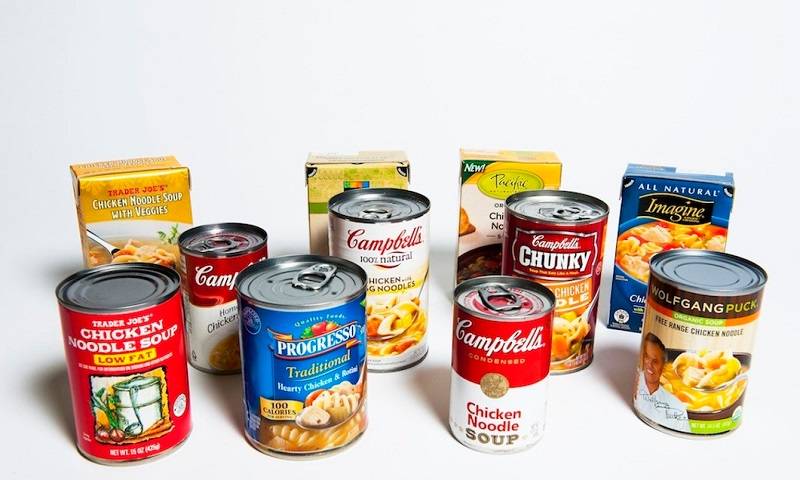Kesehatan adalah harta yang tak ternilai harganya. Oleh karena itu untuk tetap sehat orang rela melakukan apa saja. Segala cara yang dilakukan baik yang bernilai medis maupun non medis, dari yang logis hingga yang bernuansa supernatural adalah beragam usaha yang dilakukan oleh banyak orang dari berbagai kalangan untuk senantiasa sehat atau mendapatkan kembali kesehatannya.
Tak jarang cara yang dilakukan menghabiskan banyak biaya dan bahkan juga tidak jarang menabrak aneka norma dan logika. Tetapi sebenarnya menjaga diri untuk tetap sehat tidaklah sulit, bahkan juga kadangkala tidak memerlukan biaya sama sekali. Tetapi tentunya butuh ekstra kesabaran dan ketelatenan yang hanya sedikit orang bisa untuk tetap konsisten menjalani. Berikut kami sajikan 25 cara hidup sehat yang dapat Anda jadikan rujukan untuk tetap sehat dan senantiasa bahagia dalam menjalani hidup. Berikut paparannya untuk Anda.
Baca Juga : 5 Cara Kendalikan Keuangan Agar Tetap Sehat
1. Perbanyak Konsumsi Air Putih

Mengkonsumsi Air Putih via jejakwaktu.com
Tahukah Anda bahwa sebagian besar dari kita sebenarnya seringkali kurang minum cukup air setiap hari? Ini tentu hal yang tidak baik sebab seperti kita ketahui air sangat penting bagi tubuh kita. Ini karena kita kehilangan air setiap hari melalui urine, buang air besar, keringat dan pernapasan, sehingga kita perlu mengisi asupan air kita.
Sebuah penelitian menunjukkan jumlah air yang kita butuhkan adalah tergantung pada berbagai faktor. Seperti kondisi iklim dan cuaca, aktivitas fisik yang kita lakukan, dan berat badan, tetapi umumnya kita perlu 2,7-3,7 liter asupan air. Jika muncul tanda-tanda seperti misalnya; urine Anda berwarna atau agak kuning, bibir kering, mulut kering dan sedikit buang air kecil. Segeralah minum air karena itu tanda-tanda yang muncul karena tubuh Anda mulai kekurangan cairan.
2. Tidur dan Beristirahatlah yang Cukup
Tidur dan istirahat yang cukup adalah salah satu kunci dari kebiasaan hidup yang sehat. Ini sangat beralasan sebab tubuh sangat membutuhkan istirahat untuk dapat beraktifitas kembali dengan maksimal. Tetapi bila Anda tidak beristirahat dengan baik, Anda bisa mengkompensasi dengan makan lebih banyak, tetapi ini sangat tidak direkomendasikan oleh para ahli kesehatan. Cukup istirahat dan tidur juga mencegah penuaan dini.
3. Meditasi
Meditasi menenangkan pikiran dan menenangkan jiwa Anda. Ketenangan sendiri sangat bermanfaat untuk kesehatan karena dapat menjauhkan kita dari stress yang menjadi sumber dari banyak penyakit dan gangguan kesehatan.
4. Berolahraga Teratur
Penelitian telah menunjukkan bahwa berolahraga setiap hari membawa manfaat luar biasa bagi kesehatan kita, termasuk peningkatan rentang hidup, menurunkan risiko penyakit, kepadatan tulang yang lebih tinggi dan penurunan berat badan. Jika Anda tidak punya waktu untuk berolahraga atau pergi ke pusat kebugaran, berjalan kaki atau aktifitas sehari-hari seperti memilih untuk naik tangga dan buka lift akan menjadi aktifitas pengganti olahraga yang mudah dan murah.
5. Lakukan Olahraga Sebagai Bagian dari Kesenangan

fun exercise via hellodoctor.co.za
Ketika Anda menikmati olahraga, Anda akan secara alami ingin melakukannya. Sebab olahraga yang terpaksa akan menimbulkan penderitaan yang alih-alih menyebabkan Anda ingin terus melakukannya tetapi malah menjadikan Anda malas. Jadi pilih olahraga yang Anda senangi dan lakukanlah rutin.
6. Berolahragalah seperti Bermain
Latihan kardio saja seperti misalnya jogging akan membuat Anda penat dan bosan. Berikan tubuh Anda lebih banyak olahraga yang menyenangkan dan berkelompok, seperti misalnya basket, sepak bola, renang, tenis, badminton atau voli dan masih banyak yang lain. Ini akan menyenangkan karena Anda sekaligus juga dapat bersosialisasi dengan orang lain sembari melakukan aktivitas yang sehat.
7. Makan Lebih Banyak Buah
Makanlah lebih banyak buah dan kurangi vitamin sintetis. Ada banyak jenis buah yang dapat Anda konsumsi yang selain menyehatkan juga rasanya dijamin enak.
8. Makan Lebih Banyak Sayuran
Seperti halnya buah-buahan, sayuran penting untuk kesehatan kita. Para ahli menyarankan bahwa kita setidaknya harus mengkonsumsi 5-9 porsi buah-buahan / sayuran, setiap harinya. Kabar buruknya adalah kebanyakan orang kurang menyenangi untuk mengkonsumsi sayuran, dan ini tentu adalah hal yang tidak baik untuk kesehatan kita.
9. Pilih Makanan Berwarna Cerah sebagai Antioksidan
Buah-buahan dan sayuran dengan warna-warna cerah biasanya tinggi dalam anti-oksidan. Anti-oksidan sangat diperlukan oleh tubuh karena mereka menghilangkan dan menangkal radikal bebas dalam tubuh kita yang bisa merusak sel-sel tubuh kita.
Jadi mungkin Anda perlu untuk mulai mengkonsumsi sayur dan buah dengan warna-warna yang berbeda, seperti misalnya; putih (Pisang, jamur), Kuning(Nanas, Mangga), Oranye (Jeruk, Pepaya), Merah(Aple, Stroberi, Tomat, Semangka), Hijau (Jambu, Alpukat, mentimun, Selada, Seledri), Ungu/Biru (Buah Berry, Terong, Buah Plum). Diet Warna ini juga baik untuk menjaga diet yang menyehatkan serta membentuk tubuh ideal.
10. Kurangi Makanan Olahan dan Makanan dalam Kaleng

Makanan Kaleng via ook-wise.com
Makanan olahan atau kalengan sebaiknya Anda hindari karena berbagai alasan seperti misalnya; nilai gizi yang sering tidak sempurna, adanya pengawet yang ditambahkan yang dapat berdampak buruk bagi kesehatan, jika dikonsumsi terus menerus dan dalam jangka waktu panjang. Bahkan juga penambahan garam yang harus Anda pertimbangkan sebelum mengkonsumsi makanan olahan atau kalengan terlalu sering.
11. Mulailah Mencintai Diri Sendiri
Dengan mencintai diri sendiri Anda akan terhindar dari dampak buruk stress yang dapat berakibat buruk juga bagi kesehatan. Selain itu Anda juga dapat mengambil lebih banyak manfaat dengan pemikiran positif terhadap cara pandang tentang hidup dan kehidupan yang lebih luas yang tentu menjadikan Anda pribadi yang lebih bahagia setiap harinya.
12. Berjalan dengan Bertelanjang Kaki
Ada banyak manfaat yang terbukti positif berjalan dengan bertelanjang kaki berjalan mulai dari dapat memperbaiki postur tubuh Anda lebih baik, mengurangi stres untuk kaki dan sendi Anda. Ini sungguh beralasan ilmiah karena berjalan dengan bertelanjang kaki memberikan efek pijatan yang menciptakan rasa nyaman ke sekujur badan Anda
13. Jauhi Orang-Orang dengan Pola Pikir Negatif
Sikap mental yang positif merupakan bagian penting dari hidup sehat. Ini tentu menjadikan Anda tidak perlu untuk mendekati Orang-orang berpikiran negatif yang akan meracuni pikiran Anda dengan segala pemikiran yang dapat menyebabkan stres yang berdampak buruk untuk kesehatan Anda.
14. Bersihkan diri Anda Sendiri juga dari Hal yang Negatif
Menjadi sehat adalah pilihan, selain Anda menolak faktor eksternal Anda juga harus mampu untuk menetralisir segala pikiran kontra produktif atau negatif yang dapat menjadikan Anda tidak bahagia dan stres.
15. Tuliskan Mimpi dan Kebahagian Anda

Menulis Keinginan via momitforward.com
Menyimpan pikiran-pikiran ini terpendam dalam diri itu tidak sehat. Oleh karenanya menulis akan bisa menjadi salah satu hal yang memicu pelepasan hal negatif dari dalam diri Anda sendiri. Ini juga berarti bahwa tidak sekedar menulis, tetapi juga meletakkan dasar-dasar kebahagian hidup Anda kedepan. Penelitian telah menyebutkan bahwa, sebagian remaja dan orang dewasa yang tumbuh dengan kebiasaan menulis buku harian memiliki kecenderungan yang lebih bahagia ketimbang yang tidak.
16. Kenali Makanan Pemicu, Kendalikan Asupan Gula dan Garam Anda
Mengkonsumsi gula dan garam berlebihan dapat mengganggu kesehatan, meski demikian tetap diperlukan konsumsi gula dan garam dalam kadar yang tepat.
Baca Juga : Keuangan Anda Sehat? Jawab Dulu 5 Pertanyaan Ini
17. Seringlah Bernafas Dalam-Dalam
Anda mungkin tahu bagaimana untuk bernapas, tetapi sudahkah Anda bernapas dengan cara yang tepat dan sehat? Anehnya sebagian besar dari kita tidak bernapas dengan benar – sebab hanya bernafas dangkal.
Seperti seorang Atlet yang dilatih teknik pernapasan yang tepat untuk mendapatkan performa terbaik mereka. Sebuah tarikan nafas yang penuh di mana Anda benar-benar mengisi paru-paru Anda dengan oksigen akan membuat kita menjadi lebih segar dan bergairah.
18. Hindari Cara Makan yang Melibatkan Emosional
Tak jarang ketika kita stress atau merasa tertekan kita makan lebih banyak, ini adalah sebuah bencana bagi kesehatan. Cara makan yang melibatkan emosi atau menuruti emosi akan menyebabkan dampak buruk, yang paling terlihat tentunya adalah obesitas.
19. Makanlah dalam Porsi Kecil
Makanlah sedikit tapi sering, ini akan membuat Anda merasa lebih baik. Karena dengan demikian tubuh Anda akan dapat mencerna makanan dalam proses metabolisme dengan lebih sempurna. Ini bukan berarti adalah pembenaran untuk kebiasan mengemil tentunya.
20. Berhenti Makan ketika Anda Merasa Kenyang

Eating via abiummi.com
Kebanyakan dari kita sering kali memiliki kebiasaan makan yang tidak menentu kadang kita makan terlalu banyak atau terlalu sedikit. Tak jarang situasi sosial juga mendukung seperti misalnya ketika kita sedang ada di tengah pesta. Ingatlah bahwa Anda bukan mesin penggiling yang bisa menghabiskan seluruh makanan yang terhidangkan.
21. Karbohidrat Coklat vs Karbohidrat Putih
Menganti nasi putih dengan beras merah atau beras dengan kulit ari yang masih tersisa, roti putih dengan roti gandum utuh. Juga adalah sebuah kebiasan yang baik bagi kesehatan.
22. Hiduplah dengan Tujuan
Kesehatan yang positif dimulai dari dalam! Apakah Anda menjalani kehidupan yang berarti? Apakah Anda hidup sejalan dengan tujuan Anda? Pastikan Anda mencanangkan tujuan hidup Anda, dan raihlah dengan penuh ketenangan adalah suatu hal yang baik dan berati untuk hidup dan kesehatan Anda.
23. Katakan Tidak untuk Makanan Berminyak
Mengurangi asupan makanan cepat saji, gorengan serta makanan berminyak lainnya akan berdampak baik bagi kesehatan Anda.
24. Kendalikan Kandungan Gula pada Tubuh Anda
Simpan hal-hal yang terlalu manis, permen, coklat, cake dengan toping yang terlalu manis. Mungkin semua enak dan luar biasa dipAndan mata mungkin lebih lagi ketika menyentuh lidah, tapi ingatlah kesehatan Anda adalah mutlak adanya.
25. Go organik

Sayuran Organik via hellodoctor.co.id
Sering ada pertanyaan, “apa itu makanan organik?”dan jawabannya adalah "makanan yang dihasilkan tanpa input sintetis seperti pestisida dan pupuk kimia, tidak mengandung organisme hasil rekayasa genetika, dan tidak diproses menggunakan radiasi, pelarut industri, atau makanan tambahan kimia". Dengan memperhatikan penjelasannya saja mungkin sudah terbayang sayuran hijau, atau buah tanpa pestisida yang tentu bebas dari rasa khawatir untuk menyantapnya pula.
Hidup Sehat itu Mudah, Kuncinya Disiplin
Sehat itu mahal, jika sakit apapun yang kita punya bisa habis terjual buat berobat, oleh karena itu jika Anda ingin berhemat, maka jalani saja pola hidup sehat. Hidup sehat sendiri sangat sederhana. Anda tinggal ikuti saja 45 cara hidup sehat seperti uraian diatas. Jika Anda disiplin dalam menjalankannya, selain hemat biaya dalam menjalankannya, kesehatan Anda juga akan terjaga.




